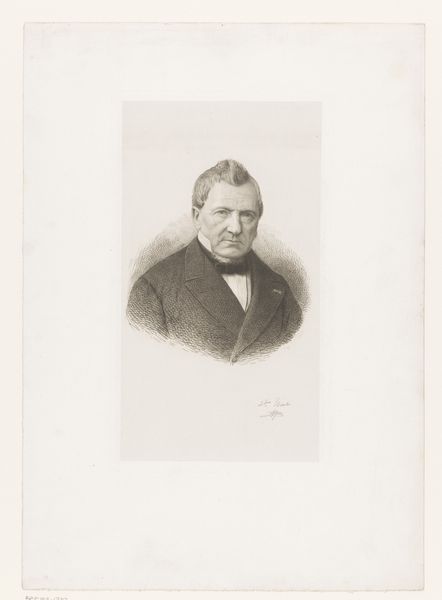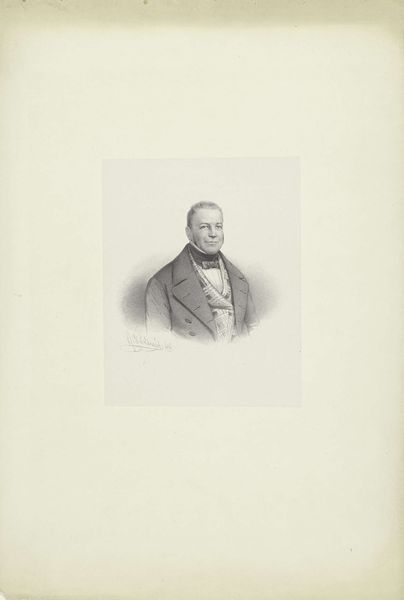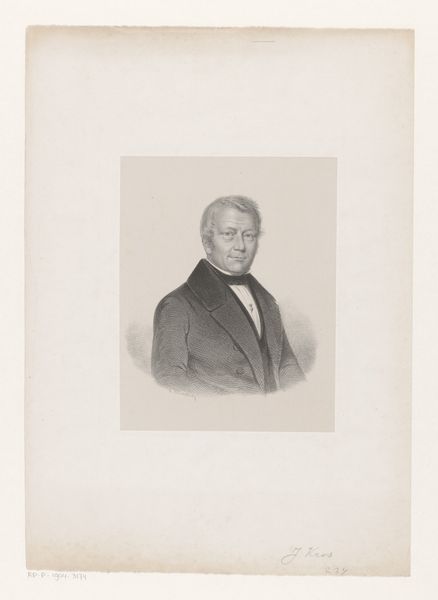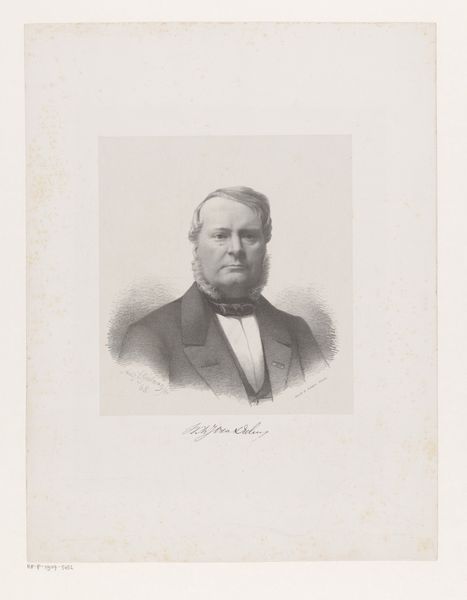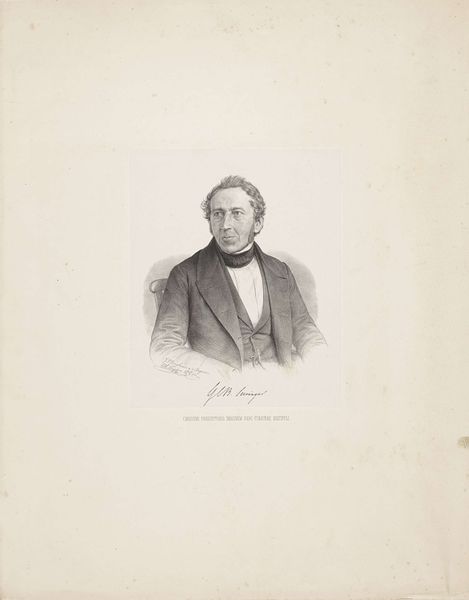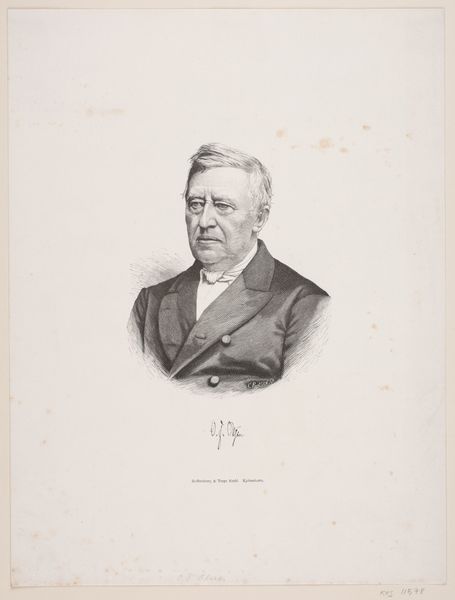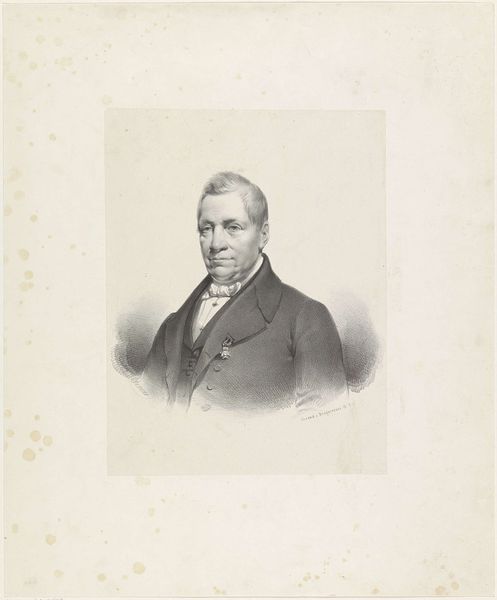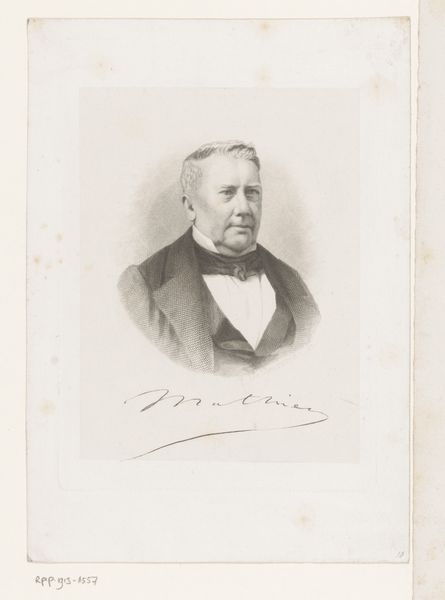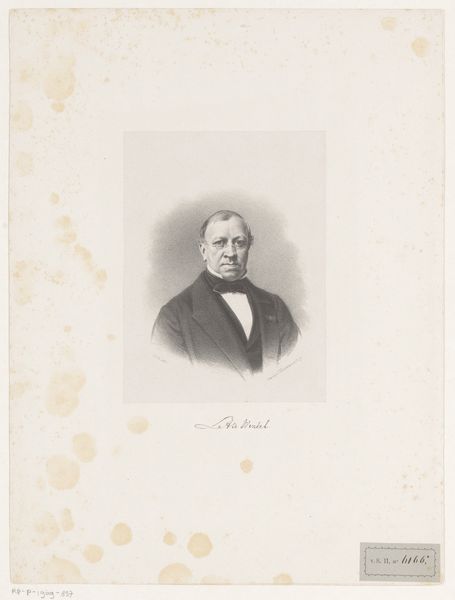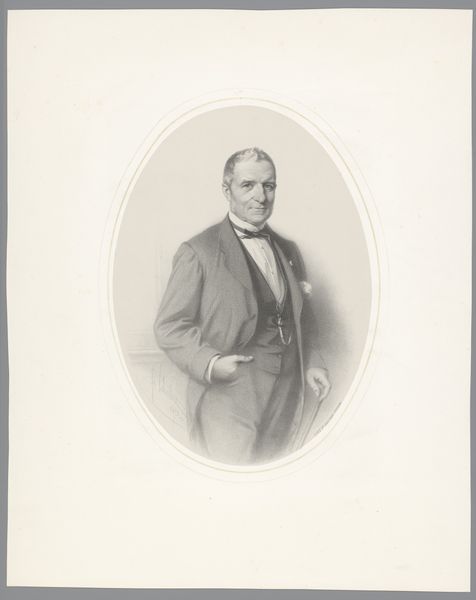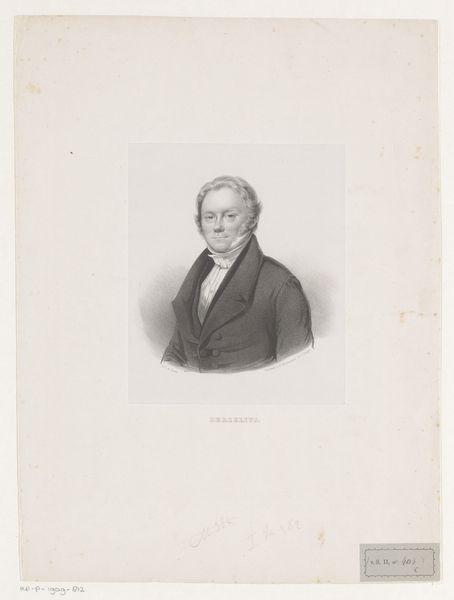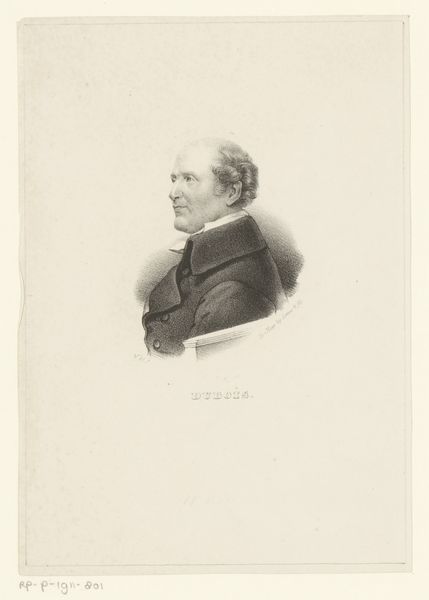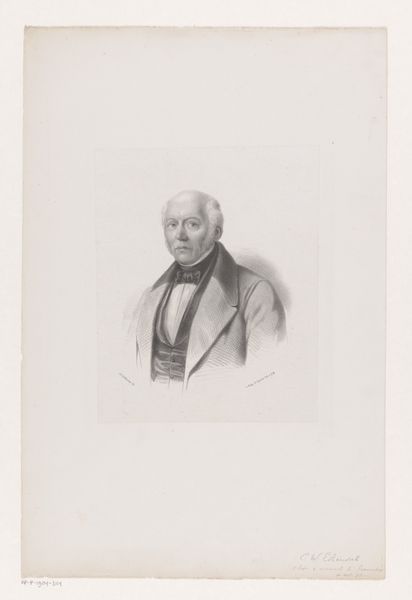
Portret van Gerrit Lodewijk Hendric Hooft 1842 - 1872
0:00
0:00
drawing, paper, pencil
#
portrait
#
pencil drawn
#
drawing
#
paper
#
pencil drawing
#
pencil
#
academic-art
#
realism
Dimensions: height 484 mm, width 353 mm
Copyright: Rijks Museum: Open Domain
Editor: Here we have Nicolaas Johannes Wilhelmus de Roode's "Portret van Gerrit Lodewijk Hendric Hooft," a pencil drawing on paper created sometime between 1842 and 1872, and displayed at the Rijksmuseum. The detail achieved with pencil is impressive! I’m struck by how realistic and lifelike the subject seems. How do you interpret this work? Curator: What captures my attention is the stark contrast between the meticulous rendering of Hooft’s figure and the austere, almost barren background. Consider the use of line and shading; they coalesce to define form, creating a sense of three-dimensionality on a two-dimensional surface. Notice the oval shape, an interesting choice which appears to contain or perhaps emphasize the subject. The realism is not merely representational, it’s a conscious formal decision to present the sitter in a certain way. Editor: So, it's the *how* that matters, the choices made about composition and technique? Curator: Precisely. Let us think, for a moment, about semiotics, the signs. Every artistic choice conveys a meaning: the artist’s decision to render Hooft in such detail, within the isolating oval, speaks to specific power dynamics. The structure is meticulously observed to produce an elevated, isolated effect. Consider, for example, what is included and what is intentionally excluded to concentrate on the essence. Editor: I see. By analyzing these formal elements—the line, the shape, the rendering—we uncover the core message without needing biographical information. It emphasizes the self-contained quality through stark aesthetic techniques. Curator: Indeed. Close observation reveals not just skill but also the artist’s intent and artistic intelligence. It invites the viewer to closely analyze those structural forms within the framework to decode the drawing and arrive at greater revelations and deeper meaning. Editor: That gives me a new lens to use when viewing other portraits. Thanks for this deep dive!
Comments
No comments
Be the first to comment and join the conversation on the ultimate creative platform.
